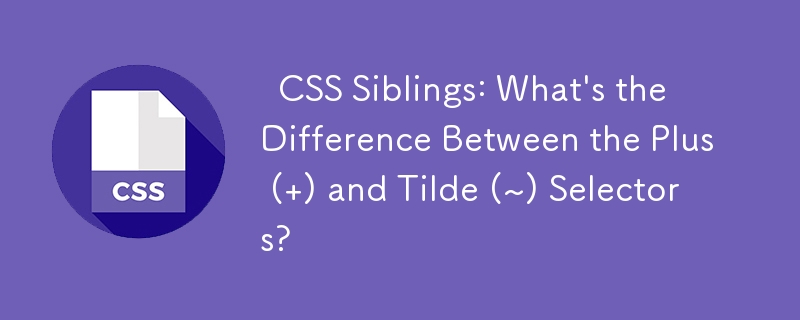

Siblings in CSS: Exploring the 'Plus' and 'Tilde' Selectors
When working with CSS, understanding the difference between the 'plus' ( ) and 'tilde' (~) selectors is crucial. Both selectors are used to target sibling elements in the HTML document, but they serve distinct purposes.
Let's provide a comprehensive explanation to clarify the distinctions:
The ' ' Plus Selector
The ' ' selector selects sibling elements that immediately follow the specified element. For instance, 'div p' will match all paragraph elements that are directly adjacent to 'div' elements in the document flow.
In your provided example, if you have HTML like this:
<code class="html"><div> <p>Paragraph 1</p> <p>Paragraph 2</p> </div></code>
The 'div p' selector will only match the first 'p' element, as it's immediately adjacent to the 'div' element.
The '~' Tilde Selector
On the other hand, the '~' selector matches all sibling elements that are preceded by the specified element, regardless of their distance in the document flow. Therefore, 'div ~ p' will select all 'p' elements that are anywhere below a 'div' element in the HTML hierarchy.
In the same example as before:
<code class="html"><div> <p>Paragraph 1</p> <p>Paragraph 2</p> </div></code>
The 'div ~ p' selector will match both 'p' elements because they are both preceded by a 'div' element, even though the second 'p' element is not immediately adjacent to 'div'.'
Choosing the Right Selector
Depending on your specific requirements, you can choose the appropriate selector as follows:
Keep in mind that both selectors are sensitive to whitespace, so ensure that there are no extra spaces or line breaks between the elements you want to target and the reference element.
The above is the detailed content of CSS Siblings: What\'s the Difference Between the Plus ( ) and Tilde (~) Selectors?. For more information, please follow other related articles on the PHP Chinese website!




